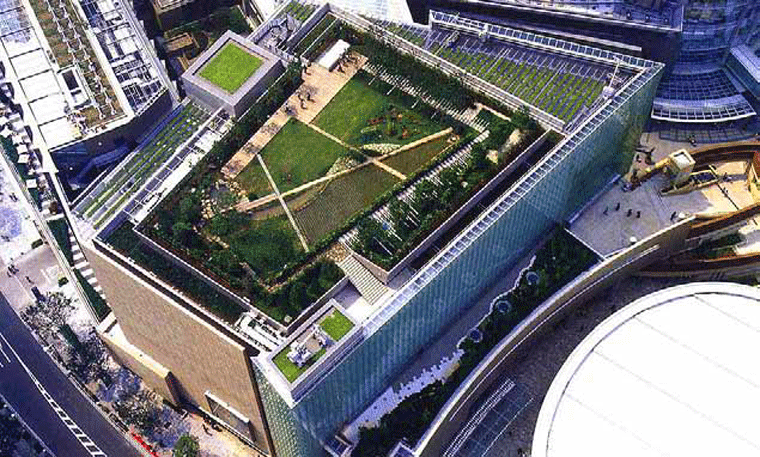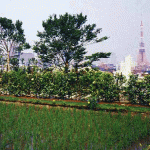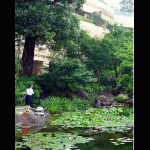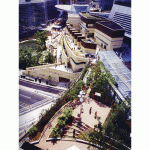
Roppongi Hills is an experimental urban development in the heart of Tokyo. The complex was envisaged as a way to revitalize a depressed downtown enclave, not only through economic development, but also by adding much needed green space in a city that suffers from intense urban heat island effect. The Tokyo Metropolitan Government worked with the developer Mori Building Company to design Roppongi Hills as an entertainment district and a lush garden neighborhood in the heart of the city.
The area’s skyscrapers maximize the available space for housing, offices, and entertainment in the dense city centre. Site planners were creative in their use of greenery, knitting together the complex with a network of pathways, gardens, and green roofs. In a city with only 14% green space, Roppongi Hills has twenty-six percent of its land area planted with vegetation. Soil Depths: 30mm to 1200mm (1.17 – 46.8 in).
The Keyakizaka complex rooftop boasts a rice paddy and vegetable plot, while the Sakurazaka roof exhibits public art and street furniture in a garden setting. There is a 4000m2 (43,000 sf) traditional Japanese garden, and most of the residential area is designed in a blended Japanese-British style. Almost all the buildings, including the Asahi Television tower and the Virgin Cinema complex, have green roofs. The variety of landscaping on the Roppongi Hills buildings showcases the potential for inventive green and vertical urban development.
 Greenroofs.comConnecting the Planet + Living Architecture
Greenroofs.comConnecting the Planet + Living Architecture








